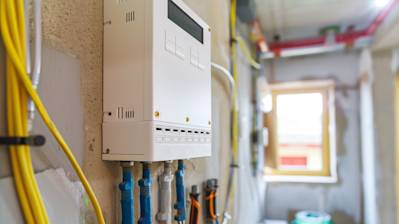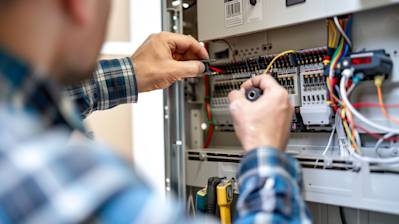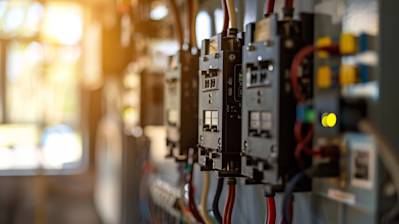Your do-it-yourself (DIY) home improvement project or electrical repair works could be held back by challenges during wire stripping. Considering this, we present a comprehensive guide on how to strip a wire efficiently and safely. This step-by-groove guide offers detailed instructions, safety tips, and different methods to strip a wire.
Understanding the Basics of Wire Stripping
Before diving into the how-tos, it's essential to understand what wire stripping entails. Essentially, wire stripping is the process of removing the protective plastic coating (insulation) from the conductor wire. Essential as it is, you must be wondering why anyone would want to strip a wire. During any electrical repair or installation work, exposed wires are necessary for establishing connections. Hence, stripping a wire becomes an essential skill every DIY enthusiast or professional electrician should possess.
Let's Break Down What You Need
Required items in this task include:
- Wire cutters
- Wire strippers
- Utility knife
Wire Cutters / Diagonal Cutters
These are plier-like tools that offer fine cutting. They are excellent for precision works and smaller cables.
Wire Strippers
There are three main types of wire strippers; automatic, manual, and laser. For most domestic applications, automatic or manual strippers are preferred due to their ease of use and cost-effectiveness.
Utility Knife
A utility knife can help in removing the insulation without damaging the conductor wire, especially when dealing with larger wires.
Safety First, Always!
Remember, you're dealing with wires and potentially electricity. So, keep the following precautions in mind:
- Always turn off the power source before starting the stripping process.
- Make sure your tools are in good condition with proper insulation to prevent electric shock.
- Wear safety glasses to protect your eyes from tiny fragments that may be projected during the process.
- Never pull the insulation with your teeth.
Stripping a Wire - Step by Step Guide
Using a Wire Stripper
Choose the Right Tool: Pick an automatic or manual wire stripper depending on your comfort and convenience.
Measure the Amount of Wire to Be Stripped: This is to prevent stripping too much or too little of wire's insulation.
Find the Right Stripper Hole: Place your wire in different holes until you find one that fits your wire without cutting into the metal. Automatic stripper usually adjusts itself to the wire size.
Position Your Wire: Insert the cable to the desired length in the selected hole.
Strip the Insulation: Press the handles together and pull the device towards the end of the wire.
Inspect: After stripping, ensure that the bare wire is clean and not damaged.
Using a Utility Knife
This method suits larger cables that might not fit into wire strippers.
Plan Your Cut: Decide how much insulation you need to remove.
Score the Insulation: Using your utility knife, gently score around the wire's insulation, ensuring not to cut through it.
Remove the Insulation: Grab the wire at both ends of the scored section, bend and twist it until the insulation comes off.
Check the Bare Wire: As always, check for any damage to ensure a smooth electrical connection.
Valuable as manual methods are, there are advanced ways of stripping a wire, especially in a commercial setting. These include:
- Using laser wire strippers - precise and perfect for sensitive applications.
- Using thermal wire strippers - utilizes heat to melt and remove the insulation.
Frequently Asked Questions about How To Strip A Wire
Why is Stripping a Wire Necessary?
Stripping a wire is crucial because it allows the exposed conductive metal to connect with terminals, other wires, or electrical devices. Without removing the insulation, the conductive part of the wire would not be able to transmit electricity to where it’s needed.
What Tools Can I Use to Strip a Wire?
The preferred tool to strip a wire is a wire stripper. This tool has different-sized notches to accommodate various wire gauges. However, in the absence of a wire stripper, one can use utility knives, scissors, or side cutters, but caution should be taken not to damage the conductor.
How Do I Choose the Correct Notch on a Wire Stripper?
To choose the correct notch on a wire stripper, you first need to know the wire's gauge, which is usually printed on the wire's insulation. If you can't identify the gauge, you can start with the largest notch and work your way down until you find a notch that doesn’t cut through the wire’s conductive part when you strip the insulation.
Can I Strip a Wire Without a Wire Stripper?
Yes, you can strip a wire without a wire stripper. Using a utility knife, gently score around the insulation (not too deep), then bend the wire back and forth until the insulation breaks. Be aware that this method might damage the conductor if not done carefully.
How to Properly Strip a Wire with a Wire Stripper?
Properly stripping a wire with a wire stripper involves selecting the correct notch for the wire's gauge, inserting the wire into the notch, and squeezing the tool's handles together. With a smooth motion, pull the stripper towards the end of the wire, taking the insulation with it.
How Much Wire Insulation Should I Strip?
The amount of wire insulation to strip depends on your specific need. Generally, for connecting wires using wire nuts, you should aim to strip at least 1/2 an inch. However, the amount may increase to 3/4 or 1 inch for other connections like outlets or switches. Always ensure that no bare wire is exposed once your connection is complete.
Is There a Certain Technique to Strip a Wire?
The key technique to strip a wire involves carefully scoring the insulation without penetrating too deeply into the wire's conductive part. The aim is to be able to pull off the insulation while leaving the conductive material intact and undamaged.
Can Stripped Wires Cause a Fire?
Yes, stripped wires can potentially lead to a fire risk if mishandled. Exposed wires can cause shorts, sparks, or overheat, which might ignite surrounding flammable materials. Always ensure stripped wires are well insulated or within a closed circuit to minimize such risks.
Can I Strip a Wire that is Energized or Still Connected to a Power Source?
This is unsafe and should be avoided whenever possible. Always ensure that the wire you are working on is disconnected from any power source before starting any stripping procedure. This is so as to preserve your safety and those around you.
Pros of Stripping a Wire
Enhances Electrical Connections
One of the primary benefits of wire stripping is that it enhances electrical connections. When you strip a wire before connecting it to another wire or to a device, it allows for direct metal-to-metal contact. This can result in better electrical conductivity and can improve the performance of any electronics that are attached to the wire.
Cost-Effective Solution
Wire stripping can save both time and money. Instead of replacing a wire that is damaged, stripping the wire can fix the issue at hand. Purchasing a new wire can be costly, especially when dealing with large-scale electrical work. By investing in a wire stripper and learning how to strip wires effectively, this can save significant costs in the long run.
Flexibility and Customization
Stripping a wire can also provide more flexibility and customization in electrical projects. With various lengths of exposed wire, it is easier to fit into different terminals or to twist together with other wires. This can be particularly beneficial in complex wiring systems where different lengths and configurations of wires may be needed.
Wire Optimization
Wire stripping can also contribute to optimizing the wire's capacities, especially if the wire in question has been affected by corrosion, oxidization, or damage. By removing the wire's exterior coating you expose the fresher, unaffected wire underneath.
Cons of Stripping a Wire
Risk of Wire Damage
One of the primary risks associated with wire stripping is the potential for damaging the wire. Particularly when using manual wire strippers, it's easy to accidentally cut into the wire being stripped if you're not careful. This can not only affect the wire's ability to transmit electrical current but also create a potential safety hazard.
Requires Skill and Knowledge
Stripping a wire requires some knowledge of electronics and a certain amount of skill. Stripping a wire improperly can be dangerous, so it's important that individuals know what they're doing before they begin. This includes knowledge of the correct tool to use, how much insulation to remove, and understanding the risks if a wire is stripped improperly.
Time-Consuming
Depending on the number of wires that need to be stripped and the method of stripping used, wire stripping can be a time-consuming process. While the actual act of stripping a wire might only take a moment, if there are many wires to strip the time spent can quickly accumulate.
Potential for Personal Injury
While wire stripping is generally safe when done properly, there is always a risk for personal injury when dealing with any kind of tool or piece of equipment. Wire strippers can be sharp, and it's possible to cut or injure yourself if you're not careful.
Stripping Wire can void Warranties
In some cases, if a wire, cable, or connected device is under warranty, stripping a wire can void this protection. Even though stripping a wire can fix issues temporarily, consider if the overall loss of warranty and potential future repairs might outweigh the immediate benefits.
Environmental Impact
While not usually a primary concern, stripped wires contribute to electronic waste if not disposed of correctly. Over time, the accumulation can impact the environment negatively. Therefore, always ensure to recycle stripped wire materials to minimize the environmental implications.
Summary
So there we have it, the nitty-gritty on how to strip a wire. Mastering this skill will save you hundreds of dollars in electrician fees and there's something satisfying about doing a job yourself. It's really not as intimidating as it may seem, and knowing how to strip a wire is a basic, yet useful skill to have under your belt! Just remember to stay safe and practice a few times on spare wires before you take on the real thing.
We've just explored the basics of how to strip a wire without much fuss. Remember, this can save you some cash in the long run and it’s definitely going to be a useful skill. Most importantly always remember to put safety first. Wire stripping is a basic skill that's easy to learn and great to have. Once you're comfortable, you’ll be ready to tackle any wiring project!
So, we've covered what you need to know about how to strip a wire. It might take a little bit of practice to get it perfect, but once you've got the hang of it, it's pretty straight forward. And seriously, there's a bit of a thrill in knowing you can handle basic electrical work on your own. Be safe, take your time, and get to know every detail of it. This is a cool and practical skill that will definitely come in handy!
About Sagan Electric
At Sagan Electric, we're more than just your local Sacramento, CA electricians. We are a dedicated team of professionals, passionate about powering your home or business with the highest quality electrical work. With years of expertise and a sparkle of creativity, our crew takes pride in providing you with efficient, flawless, and aesthetically pleasing electrical solutions. We're not just maintaining circuits and fixing outlets - we are brightening your world, one bulb at a time. At Sagan Electric, we don't just spark- we ignite.
Tags: soldering, wire stripping tool, electrical wiring,








